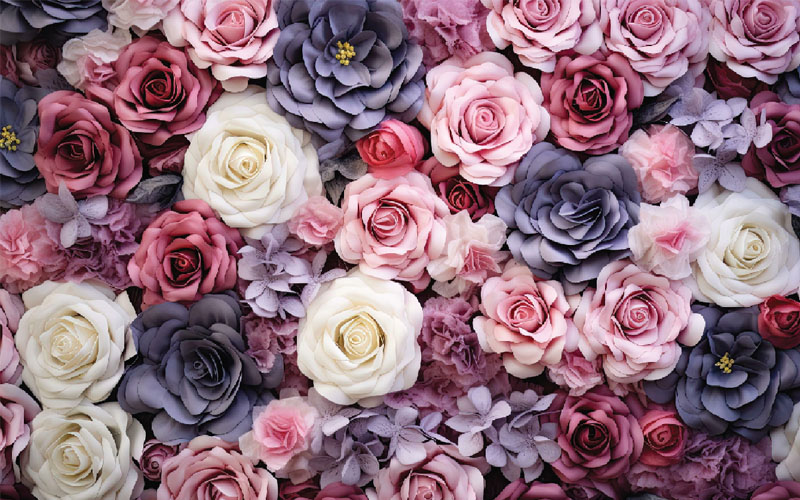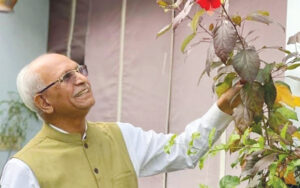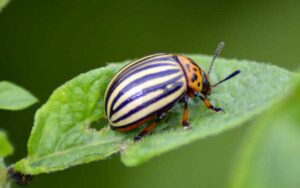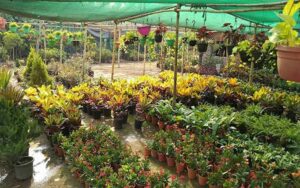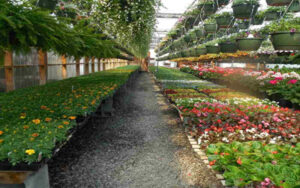Dark face of artificial floras!
YP Singh
Editor, Nursery Today
In these days, the world is getting attracted towards artificial flowers and these flowers have reached at every corner of the home. At the same time, there are some gentle people who have been raising their voice against this artificiality of floras. They know that the world of such plants and flowers is gradually filling people’s lives with despair and sadness. Everyone knows how the materials used in artificial flowers are leading to destruction of the natural balance and environment. This is such a destructive step that is continuously making the society indifferent towards nature. Therefore, some environmentalists and social workers working on plants and flora, who are aware of its destructive components, are mobilizing against it. Among such people, Mr. Yogesh Aneja is an efficient and very active person who is making people aware about the destructive components of artificial plants and flora through his active activities in entire Maharashtra (especially Pune). He is a board member of Studies of Gandhian Thoughts. He is also a faculty member of Humanities stream at ‘RTMNU’ Nagpur. They are making efforts in this direction in a very vocal and effective manner.
 While we all know that the Maharashtra government has banned the use of artificial plants and flowers since 2018 however but it is very disturbing to see that people continue to use artificial plants and floras. Mr. Aneja is working with his team to spread awareness to stop the use of artificial flora. In this context, he had also met the Deputy Chief Minister of Maharashtra and informed him about the deformities caused by its side effects. At the same time, the Deputy Chief Minister also urged the farmers of his state and all other stakeholders to participate enthusiastically in their movement. Even though people know that artificial flowers are causing huge harm to farmers, soil, climate, environment, small animals, bees-keepers but they are still not paying attention to stop it, which is very sad and disappointing. But Mr. Aneja is working hard in the hope that one day people will understand its ill effects because it is true that any big change happens gradually and is permanent. In this endeavor, he explains his kindness towards natural plants and flowers, their production, their usefulness and their impact on the environment. They interpret natural flowers and plants as a source of positive energy emission. Looking at their efforts, it can be said that in the coming days they will prove to be a milestone in this direction.
While we all know that the Maharashtra government has banned the use of artificial plants and flowers since 2018 however but it is very disturbing to see that people continue to use artificial plants and floras. Mr. Aneja is working with his team to spread awareness to stop the use of artificial flora. In this context, he had also met the Deputy Chief Minister of Maharashtra and informed him about the deformities caused by its side effects. At the same time, the Deputy Chief Minister also urged the farmers of his state and all other stakeholders to participate enthusiastically in their movement. Even though people know that artificial flowers are causing huge harm to farmers, soil, climate, environment, small animals, bees-keepers but they are still not paying attention to stop it, which is very sad and disappointing. But Mr. Aneja is working hard in the hope that one day people will understand its ill effects because it is true that any big change happens gradually and is permanent. In this endeavor, he explains his kindness towards natural plants and flowers, their production, their usefulness and their impact on the environment. They interpret natural flowers and plants as a source of positive energy emission. Looking at their efforts, it can be said that in the coming days they will prove to be a milestone in this direction.
The greatest service is to avoid artificiality
People tend to like real, live plants, even if they require more upkeep than “fake” plants. That said, some people have a really hard time maintaining live plants, so they end up utilizing artificial ones to decorate their homes, office spaces and rooms in general. However, artificial plants (or faux plants), including trees, foliage and flowering plants, wall panels, wreaths and stem flowers, are an increasingly popular form of decorative or functional product used in the domestic setting and in public places. Otherhand, artificial plants don’t need water and they don’t die. Because of their convenience, the demand for decorative plastic plants has been increasing over recent years. However, no information exists on the origin or nature of the polymers employed or the type of additives used in order to understand potential environmental impacts and inform safe and sustainable disposal or recycling practices. we know that demand for artificial plants has surged rapidly over the past few years, with the market predicted to grow at a rate of over 4 % per year until 2030 when its value is estimated to be almost $1bn (Market Research Future, 2023). This growth may be largely attributed to the benefits and convenience of artificial plants. Thus, they are cheaper and more durable than natural plants, need little maintenance, have no light or temperature requirements, are not subject to seasonal change and do not act as a source of potential allergens.
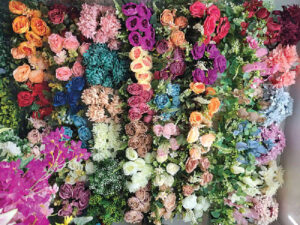 These artificial plants are created using a variety of materials to mimic the textures, colours, and forms found in nature. Some common materials used in the production of fake plants include plastic, silk, fabric, rubber, and other synthetic materials. But there are no standards of chemicals which are used in plastic plants. Widespread contamination of plastic plants may impose constraints on their recycling and disposal. Modern techniques involve carved or formed soap; nylon netting stretched over wire frames, ground clay, and mass-produced injection plastic mouldings. Polyester has been the main material for manufacturing artificial flowers since the 1970s. Most artificial flowers in the market nowadays are made of polyester fabric. That being said, their negative impact on the environment should not be ignored. From the production process to disposal, faux greenery can contribute to plastic pollution, emit VOCs harmful to human health, and end up in landfills. In more sense, artificial plants are not; however, able to clean indoor air can lack authenticity and may fade over time when deployed outdoors. Moreover, while artificial plants may offer some physiological (relaxation) and psychological benefits as indoor visual stimuli, recent research suggests that they are not as significant as those engendered by real plants.
These artificial plants are created using a variety of materials to mimic the textures, colours, and forms found in nature. Some common materials used in the production of fake plants include plastic, silk, fabric, rubber, and other synthetic materials. But there are no standards of chemicals which are used in plastic plants. Widespread contamination of plastic plants may impose constraints on their recycling and disposal. Modern techniques involve carved or formed soap; nylon netting stretched over wire frames, ground clay, and mass-produced injection plastic mouldings. Polyester has been the main material for manufacturing artificial flowers since the 1970s. Most artificial flowers in the market nowadays are made of polyester fabric. That being said, their negative impact on the environment should not be ignored. From the production process to disposal, faux greenery can contribute to plastic pollution, emit VOCs harmful to human health, and end up in landfills. In more sense, artificial plants are not; however, able to clean indoor air can lack authenticity and may fade over time when deployed outdoors. Moreover, while artificial plants may offer some physiological (relaxation) and psychological benefits as indoor visual stimuli, recent research suggests that they are not as significant as those engendered by real plants.
In fact, it is the natural things given by God that beautify human life, infuse energy into life and bring liveliness into human relationships. Similarly, when you give support to artificial things in your daily life, you will definitely move away from the values of life, suffer from loneliness, and relationships will fail. Slowly but surely the monotony will start bothering you. At the same time, natural beauty will make you energetic day by day. You will feel refreshed. Your time will be well spent and you will be able to complete your work with more enthusiasm. Therefore, it can be said that it is possible to infuse joy and enthusiasm in life only by living in the lap of natural resources. Although artificial flowers and plants have been used for ages it is now needed that their use is curbed to a bare minimum. There are several advantages and disadvantages of using fake plants and flowers over real ones. The most significant drawback of artificial flowers and plants is that they are artificial!
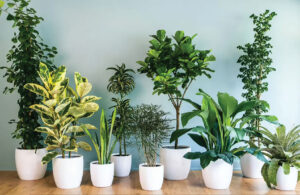
History
The use of fake or artificial plants dates back to ancient times, although the materials and techniques used have evolved over the centuries. While it might not be surprising to many, the majority of the global supply of artificial plants originates from China, tracing its roots back to the invention of silk production from silkworms. The historical significance lies in the elaborate process of silk-making, which began over three thousand years ago to produce the softest and most luxurious silks. Interestingly, silkworms, the larvae of silk moths, are entirely reliant on humans for their reproduction and survival, unable to thrive in the natural world without human intervention in aspects such as rearing and feeding.
The origin of the knowledge that these flightless bugs could yield such exquisite materials is attributed to Leizu, the wife of the Yellow Emperor in 2696 BC. According to the tale, while having tea in her Imperial Gardens, a silk moth’s cocoon fell into her cup and unraveled. Observing the single, long, and incredibly soft thread of the cocoon, the concept of creating textiles from these materials was conceived. Over centuries, the Chinese perfected the intricate process of reproducing fine silks. Once the material, created by the larvae, was spun into cloth, it was fashioned into opulent garments exclusive to the higher class, serving as a significant status symbol.
Disadvantages
While fake plants have their advantages, there are also some disadvantages associated with their use. It’s essential to consider these factors when deciding whether to opt for artificial plants. Here are some drawbacks:
Lack of Air Purification: Real plants play a role in improving indoor air quality by absorbing carbon dioxide and releasing oxygen. They can also help remove certain pollutants from the air. Fake plants, being non-living, do not contribute to these air-purifying benefits.
Less Eco-Friendly: The production of artificial plants involves the use of synthetic materials such as plastics, which are derived from non-renewable resources. Disposing of fake plants can contribute to environmental issues, as they may not break down easily and can add to landfill waste.
Limited Aesthetic Changes: Unlike real plants, fake plants do not undergo natural growth and changes. They maintain a static appearance, which may lack the dynamic beauty of living plants. Real plants can bloom, produce new leaves, and adapt to their environment, providing an ever-changing aesthetic.
Not Suitable for Some Environments: Fake plants may not be suitable for certain environments or climates. Exposure to direct sunlight or extreme temperatures can cause fading, warping, or other damage to artificial plants. This can limit their use in outdoor settings.
Potential for Tacky Appearance: The quality of fake plants can vary widely. Low-quality artificial plants may have a tacky or cheap appearance, detracting from the overall aesthetic of a space. Investing in higher-quality faux plants can mitigate this issue.
Static Texture: While advancements have been made in creating realistic-looking fake plants, some may still lack the natural textures and variations found in real plants. Touch and feel can be important aspects of the overall visual experience.
Initial Cost: High-quality artificial plants can be expensive, especially those designed to closely mimic the appearance of real plants. This initial cost may be a deterrent for some individuals or businesses.
Dependency on Artificial Light: Real plants rely on natural sunlight for photosynthesis and growth. Artificial plants do not have this requirement, but they may appear less natural in environments with inadequate or artificial lighting.
Apart from the disadvantages discussed above rampant use of fake and artificial plants and flowers has alarming concerns. Mr. Yogesh Aneja an activist who fights for rural upliftment in Nagpur, Maharashtra shares his valuable insights on the most adverse downside of using artificial flowers which has been elaborated as follows.
Environment
The production of fake plants involves the use of synthetic materials such as plastics, which are derived from non-renewable resources. The manufacturing process can contribute to environmental pollution. When fake plants reach the end of their usable life, they may contribute to landfill waste. Unlike natural materials, many synthetic materials used in fake plants may not easily decompose. When disposed of, artificial plants may not break down naturally, adding to the environmental burden. Recycling options for these products can be limited. The production and transportation of artificial plants can contribute to carbon emissions, especially if they are manufactured in distant locations and shipped globally. Fake plants do not provide ecological benefits, such as supporting pollinators or contributing to biodiversity. Real plants play a vital role in ecosystems by providing habitats and food sources for various organisms.
Pollination
The use of fake flowers, being artificial and not living organisms, does not contribute to the pollination process. Pollination is a crucial ecological interaction between real flowers and pollinators, such as bees, butterflies, birds, and other insects, that facilitates the transfer of pollen and the reproduction of flowering plants. Since fake flowers do not produce pollen or engage in the biological processes associated with real flowers, they have no impact on pollination or biodiversity in the same way living plants do. Flowers play a crucial role in the process of pollination, which is fundamental to the reproduction of many flowering plants. The importance of flowers for pollination extends to both the plants themselves and the broader ecosystems. Over-promoting artificial plants and flowers will lead to a decrease in the demand for real flowers and plants especially for elective purposes. Bees rely on flowers for nectar, a sugary liquid, and pollen, a protein-rich substance. Nectar provides energy, while pollen is a crucial protein source. The loss of diverse and abundant flower species can result in malnutrition for bees. Different flowers offer varying nutrients, and a diverse diet is essential for the health of bee colonies. Adequate nutrition is vital for the development of bee larvae. If adult bees are unable to find sufficient food due to the destruction of flowers, it can negatively affect the growth and health of the bee brood. Malnourished bees are more susceptible to diseases, parasites, and environmental stressors. Destruction of flowers means a reduction in foraging resources for bees, leading to insufficient food supplies for the colony.
Biodiversity
A decline in foraging resources can lead to a decrease in the overall bee population. Insufficient food availability affects the reproductive capacity of the colony, leading to a cycle of decline. Conserving natural habitats, protecting diverse flower species, and promoting sustainable land-use practices are essential for maintaining healthy bee populations The decline of bee populations, without recovery, can have severe consequences for ecosystems, agriculture, and biodiversity. Bees are essential pollinators for a wide variety of crops, including fruits, vegetables, nuts, and oilseeds. A decline in bee populations can lead to decreased crop yields, affecting global food production and supply. The decline of bee populations can disrupt natural ecosystems, leading to a decline in plant diversity and impacting other organisms dependent on those plants. As bee populations decline, there may be increased pressure on other pollinators, such as butterflies, beetles, and birds. However, these may not be as effective as bees in certain pollination processes. The decline of bees can disrupt the intricate balance of ecosystems. Plants that depend on bees for pollination may struggle to reproduce, affecting the animals that rely on those plants for food and habitat. Further, many medicinal plants rely on pollinators for reproduction. A decline in bee populations can impact the availability of these plants, affecting traditional and modern medicine. Farmers may need to invest more in alternative pollination methods, such as manual pollination or the use of managed pollinators. This can lead to increased costs for agricultural practices. Also, many nutrient-rich foods, including certain fruits and vegetables, depend on bee pollination. A decline in bee populations could contribute to a reduced availability of these essential foods. Honeybees, in addition to their role as pollinators, are essential for honey production. A decline in honeybee populations could lead to a reduction in honey supply. Efforts to minimize the destruction of flowers and create pollinator-friendly environments contribute to the well-being of bees and the ecosystems they support.
Floriculture and Farmers
 Agriculture, particularly the production of crops that rely heavily on pollination, can face economic losses due to reduced yields. This affects farmers, food prices, and the overall agricultural industry. The negative effects of overusing artificial plants and flowers can also be seen in farmers and the floriculture industry. Although the effect is indirect it can be huge if we do not stop and realize the gravity of the situation. The issues discussed above can also have an impact on the farmer’s income and livelihood. There can be a shift in consumer preference if there is a widespread trend toward the overuse of fake flowers and plants, it might result in decreased demand for real flowers and plants. This shift in consumer preferences could potentially affect farmers and businesses engaged in the cultivation and sale of live plants. The flower and plant industries, including nurseries and floriculture businesses, might experience changes in demand. If consumers increasingly choose artificial over real plants, it could impact the economic viability of businesses involved in the cultivation and sale of live plants. Currently, India stands second after China in floriculture production and with the promotion of the use of real flowers we must encourage this trend. Its adverse may result in a decline in demand for real flowers and plants which could affect employment in the agricultural and horticultural sectors. Jobs related to the cultivation, harvesting, and distribution of live plants might be impacted if the market for real plants contracts. The overuse of artificial plants does not involve agricultural land use. However, if there is a significant decrease in demand for real plants, it might lead to changes in land use patterns within the agricultural sector, potentially affecting farmers who specialize in plant cultivation. Farmers are already a debt-ridden class of society who suffer from every aspect of hardship. Economic, social, political, etc. thus, promoting the use of artificial plants will ruin the livelihood of those farmers who may otherwise have the chance to do better in the floriculture industry. It’s important to note that the impact on farmers would depend on the scale and nature of the shift toward artificial plants and the specific crops or plants being affected. Additionally, the flower and plant industry is diverse, with various crops serving different markets (e.g., cut flowers, potted plants, landscaping plants), so the effects may vary across different segments of the industry. Additionally, beekeeping is an important livelihood for many people around the world. The decline in bee populations can affect beekeepers’ incomes and livelihoods. While the overuse of fake flowers and plants may not immediately affect farmers, it could indirectly influence the flower and plant industry, potentially impacting businesses and employment in sectors related to live plant cultivation.
Agriculture, particularly the production of crops that rely heavily on pollination, can face economic losses due to reduced yields. This affects farmers, food prices, and the overall agricultural industry. The negative effects of overusing artificial plants and flowers can also be seen in farmers and the floriculture industry. Although the effect is indirect it can be huge if we do not stop and realize the gravity of the situation. The issues discussed above can also have an impact on the farmer’s income and livelihood. There can be a shift in consumer preference if there is a widespread trend toward the overuse of fake flowers and plants, it might result in decreased demand for real flowers and plants. This shift in consumer preferences could potentially affect farmers and businesses engaged in the cultivation and sale of live plants. The flower and plant industries, including nurseries and floriculture businesses, might experience changes in demand. If consumers increasingly choose artificial over real plants, it could impact the economic viability of businesses involved in the cultivation and sale of live plants. Currently, India stands second after China in floriculture production and with the promotion of the use of real flowers we must encourage this trend. Its adverse may result in a decline in demand for real flowers and plants which could affect employment in the agricultural and horticultural sectors. Jobs related to the cultivation, harvesting, and distribution of live plants might be impacted if the market for real plants contracts. The overuse of artificial plants does not involve agricultural land use. However, if there is a significant decrease in demand for real plants, it might lead to changes in land use patterns within the agricultural sector, potentially affecting farmers who specialize in plant cultivation. Farmers are already a debt-ridden class of society who suffer from every aspect of hardship. Economic, social, political, etc. thus, promoting the use of artificial plants will ruin the livelihood of those farmers who may otherwise have the chance to do better in the floriculture industry. It’s important to note that the impact on farmers would depend on the scale and nature of the shift toward artificial plants and the specific crops or plants being affected. Additionally, the flower and plant industry is diverse, with various crops serving different markets (e.g., cut flowers, potted plants, landscaping plants), so the effects may vary across different segments of the industry. Additionally, beekeeping is an important livelihood for many people around the world. The decline in bee populations can affect beekeepers’ incomes and livelihoods. While the overuse of fake flowers and plants may not immediately affect farmers, it could indirectly influence the flower and plant industry, potentially impacting businesses and employment in sectors related to live plant cultivation.
Conclusion
There are several positive and negative sides to the use of artificial plants but one cannot eliminate the fact that they are artificial. Thus, all the benefits that you perceive that you get from keeping them in your space are superficial. Real plants may be hard to manage but they give real benefits in terms of aesthetic as well as psychological. Real plants when kept in indoor spaces reduce stress, regulate humidity, purify the air, reduce noise, increase oxygen levels, alleviate the look of the place, and so on. What would artificial plants do in terms of half of the benefits served by the use of real plants and flowers to decorate spaces? On top of this, it may lead to an adverse scarcity of jobs once the consumer preference changes and there is a huge demand for artificial flowers. The environment may be negatively impacted by the humongous manufacture of plastic plants which may further contribute to plastic waste. Its long-term impact may be seen in the farmers and florists engaged in the production and selling of real plants and flowers. If artificial plants are cheaper then would it contribute similarly to the floriculture industry? Also, one must not think of flowers as an item of decoration as they are the most essential food resource for bees by providing pollination and nectar. It is needless to say how important are bees to human beings and the entire biodiversity. Although, there are regulations in some states like Maharashtra on use of artificial plants its implementation is farfetched. Awareness of all the ill effects is required by the individuals so that we put a break on the demand and supply of artificial plants leading to an efficient change. As a community, we must work towards opting to buy plants and flowers that photosynthesize rather than buying those that do not.

